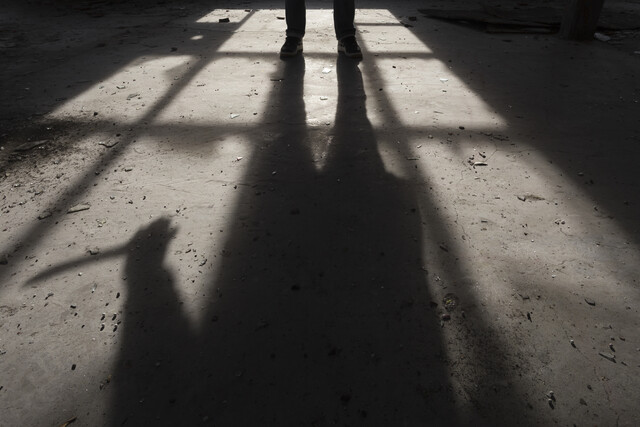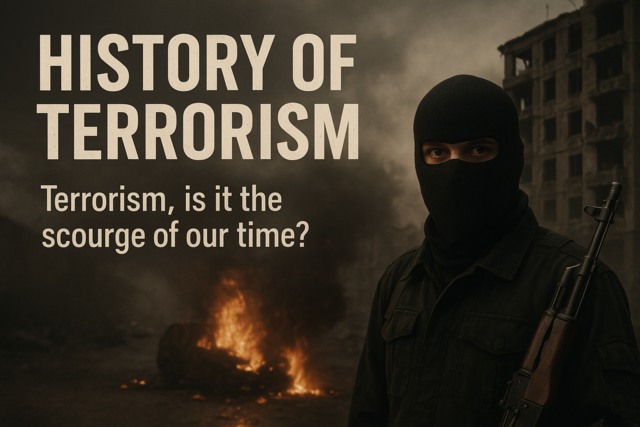Introduction
While becoming an expert in blood spatter interpretation may take years of training and experience, all crime scene investigators must become adept in the very basics of such knowledge in order to adequately interpret a crime scene and attempt to corroborate or disprove what witnesses or suspects may say. As such, bloodstains and blood spray or spatter patterns will reveal not only how an attack may have progressed, but also help crime scene investigators and law enforcement personnel to identity what type of object was used in the perpetration of the crime.
Bloodstain pattern documentation requires both handwritten and photographic records, measurements and notations of location and type. When it comes to photographing blood spatter evidence, photos should always be taken before and after placement of reference markers.
Documentation of the location, shape and size, as well as distribution of blood spatter is essential in the interpretation of the scene. Several general rules regarding bloodstains and smears offer crime scene investigators and other law enforcement personnel valuable clues as to what may have occurred in a crime scene setting. For example, see the patterns listed below for just a few of these generally accepted views regarding blood spatter interpretation.
- Directionality -- It is possible to determine the amount of force needed to create certain blood spatter spray. For example, blood spray may be caused by low, medium, or high velocity impact with various types of objects. Spatter may be sparse, liberal or anything in between.
- Cast-Off Spray -- This type of blood spatter may be slight or extreme, but is mostly seen in what can almost be termed as "lines" on walls and ceilings. The object being drenched in blood during subsequent blows after initial impact with an open wound causes such cast-off. Generally, cast-off blood spatter is fine. Generally, the higher the velocity of the moving object, the smaller the cast-off spray will be. For example, an object such as a hammer or axe may cause medium-velocity spatter, while high-velocity spatter may be caused by a gunshot wound.
- Shape -- A crime scene investigator or detective can determine in which direction a victim was moving by assessing the shape of the blood spatter. For example, spatter will produce a different size and shape to a blood drop than cast-off or spray. Small, independent blood drops may taper on one side, and form a point. In some cases, such blood drops may even assume the shape of teardrops. The narrow point of the blood drop will always point in the direction the bleeding victim or suspect is traveling. Conversely, with cast-off droplets, the "tail" end of such blood drops point to the direction of their origin.
- Force of Impact - When hundreds of drops smaller than 1/8 of an inch cover an area, it may be assumed that such blood stains or spray has been caused by an impact wound.
Blood spatter, spray and drops will differ depending on the angle of the victim when blows or injuries occurred and the type of object used to create such injuries. In some cases, there is quite a bit of what is called "back spatter", though the amount may be determined by the weapon. For example, the exit of a gunshot wound may create a larger amount of spatter than one created by a hammer or some such object.
Wound Interpretation
There are a wide variety of wounds that various weapons may inflict on human flesh and bone. Determining exactly what caused a wound may be difficult. A crime scene investigator should know the differences between wounds and their terminology in order to properly create notes and reports.
Bruises, abrasions and contusions are caused by blunt external force. For example, someone who has been killed in a motorcycle accident may have a large number of abrasions. In general, abrasions scrape off the top layer of skin but may not bleed. A contusion or bruise is caused by compression that results in swelling or discoloration. A bruise found on a body means that the injury occurred while the victim was still alive. However, a crime scene investigator should know enough about basic anatomy and physiology to realize that a blow to the back of the head may create bruising around the eyes, or that bruising may appear on the face as a result of hanging or other form of suffocation.
A crushing wound is usually caused by blunt force and occurs mainly where bones and skin are in close contact. Such injuries cause gaping wounds and extensive bleeding of surrounding tissues. In some cases, a crushing wound may produce remarkable straight and even edges and little bleeding. Such an example might be a wound created in the skull by a hammer blow. In some cases, there is no sign of a crushing wound, though beneath the surface of the skin, vital organs such as the heart, lungs, liver or spleen have been torn or damaged.
Stab wounds produce two different types of cuts. Cuts that parallel muscle tissue fibers, the edges of the wound will appear close together. If the cut is made across muscle fibers, the wound produced is generally a gaping wound. It is often difficult for crime scene investigators or detectives to determine whether some stabbing wounds were inflicted prior to or following death. However, a medical examiner is often able to determine the order in which cuts or stab wounds were inflicted.
A stab wound can be caused with a knife or a scissors, or even sticks. Weapons such as axes or swords produce other cutting wounds, including chopping. It is possible for experienced crime scene investigators to tell the difference between a stab and a chopping wound by the contusions that are present in a chopping-type wound.
In many cases, the weapon used may have left marks on the victim's body or clothing. Impressions left by objects sometimes leave traces of dirt or other debris behind, forming a clear imprint on the clothing. Such often happens in the case of footprints being found on the clothing of a person who has been beaten and kicked.
Defense injuries on the hands and arms of the victim are common, and if a knife has been used, crime scene investigators may find slashes and cuts on the inside of the victims hands and fingers after an attempt was made to grab the blade. If the victim has raised his or her hands to ward off blows, cuts and stab wounds may be found on their forearms and hands. In the case of crushing-type wounds, hands and forearm bones may be broken, a clear indication that the victim attempted to ward off blows and protect their head.
Because of the amount of time that crime scene and other law enforcement personnel must sometimes wait for a medical examiner or coroner to arrive at the scene of a crime, it is important for the crime scene investigator to make an attempt to observe the type of gunshot wound inflicted on a victim if possible. While he or she should never touch the actual wound, it may be necessary to identify what has caused the injury in order to proceed with a proper focus of the investigation.
Any time a bullet strikes human flesh, the skin is pushed inward, and then outward as it is stretched and pierced by the projectile. The entry wound will almost always be slightly smaller than the size of the bullet or projectile, because the skin will attempt to close over itself. In addition, a small caliber bullet will make a small hole in flesh as well.
A bullet that passes through the body will generally do so in a straight line, unless it hits something solid, like bone or cartilage. Therefore, it is often impossible to determine where the shooter was standing when the victim was hit. In addition, the distance between the shooter and the victim will result in different wound tracks as well; the closer the shooter, the straighter the wound track will be.
Soft nosed or unjacketed bullets and projectiles, as well as high velocity firearms can cause an extreme amount of damage to soft tissues. Some bullets will fragment into pieces and create several wound tracks and exit wounds. In some cases, it is also often difficult to determine the difference between the entry and exit wounds, especially in cases where the distance between shooter and victim is farther rather than closer. In most cases, the exit wound will have more irregular or ragged edges than the entry wound, and edges of the skin may project outward. In cases where the bullet has been damaged or altered in shape as it passes through the body, the exit wound may be substantially larger than the entry wound and may even take on a star-shaped appearance. However, the crime scene investigator must never jump to conclusions, as a close-contact wound will produce an entry wound with ragged and star-shaped edges as well.
Sometimes, the determination of the distance from which a killing shot has been fired may make all the difference in determining whether an injury was the cause of suicide or murder. A contact wound is produced in cases where the muzzle of the weapon has been pressed against the skin. A close shot is usually determined to have been fired from a distance of less than 18 inches from the body, and a distant shot is one that is generally fired at a distance of over 18 inches. In contact shots, gunpowder, soot and other metallic particles may stain the skin around the wound entrance; however, in some cases it is not present. Again, a crime scene investigator must never assume, but take into consideration other factors, using victimology, blood spatter interpretation and common sense to arrive at a conclusion that is supported by the evidence.
Conclusion
While interpreting blood spatter evidence, or in attempting to determine the type of weapon used in a crime, it is important to know the basics about human anatomy and physiology as well as the impressions and damage caused by a large number of weapons. However, never forget that positioning, movement, angle and force of weapons applied may produce dissimilar results. A good crime scene investigator will always conduct a thorough investigation and rely on all the evidence, and not just a portion of it, to come to a conclusion. Such evidence includes not only blood spatter or physical evidence, but also listening to the testimony of family and friends and obtaining an accurate sense of the victim through victimology as well.

























